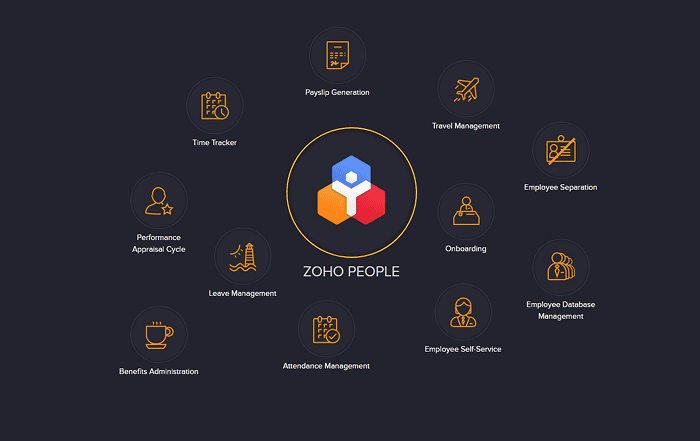
SEO needs are constantly changing, and keeping up with the latest developments can be difficult. But if you want your Google leader board to calm down, you need to know.
Well-optimized websites get more traffic over time, which means more leads and more sales. Without SEO, search engines will not find your website and all of your hard work is in vain.
Every year it seems Google gives us a new ranking factor.
- In 2014, HTTPS became a ranking signal.
- In 2015, mobile usability became a ranking signal.
- Then 2016 changed content development when RankBrain stepped in.
- And in 2017, there was a noticeable increase in the number of HTTPS websites.
- Then the speed of the mobile site will become the next crucial ranking factor.
- All in all, John Mueller assures us that excellent is the key to ranking on Google.
But how do you create an excellent website with over 1 billion websites today? I know one thing for sure: all of these ranking factors should increase user interest.
When Google ranks websites based on hundreds of ranking factors, it can seem impossible to know what to focus your SEO strategy on for the biggest boom. But here’s the good news: bulletin board signs continue to adapt to the user. This means that the roots of the already tried and tested new SEO trends lie in the current algorithm – and with a bit of creativity and experience in SEO, you can place your positions in the rankings.
Although you have no control over how search engines think and work, there is still a lot you can do to improve your site’s chances of reaching search results. So here’s an SEO practice game designed to match your area to Google’s various ranking factors. Among them, there are the three best ranking factors in the SEO industry.
1. Publish High-Quality Content
“I don’t need high-quality content to post on my website,” no one has ever said. Yet, the quality of the content on your website and blog remains critical. Content is still king.
Your content should contain valuable information. You may be worried about creating actual pages. The goal of quality content is to create pages that increase the time spent on the page, reduce bounce rates, and provide helpful content.
These blogs and guides are the high-quality search engines that users want. However, high-quality content pages should do more than just well-written and long forms for today’s SEO. It would be best if you also covered the following areas to increase your SERP presence:
Search Intent
Understanding the intent of users to search is essential to creating pages that attract organic traffic. Google has even updated its search results with a new highlighted snippet of code for multi-purpose queries.
To understand the intent of your targeted search engines, you need to dive into Google Analytics to see what users are looking for. Reports like site searches and user traffic give you an idea of what your customers are looking for.
You can also view the Search Analysis report in the Google Search Console. This report gives you an overview of users who click on search results to reach your site.
Keyword Research
Despite rumours that keyword research isn’t necessary to get a ranking, keyword research still helps create high-quality content. However, in contrast to traditional keyword research, keywords now serve as a roadmap for content creation.
With competitive research and data mining, you can discover keyword gems with average search volume and high CTR for your audience.
So if the industry continues to whisper about the adverse effects of keyword research, it’s essential to identify your primary keywords and break them down into search engine-relevant topics.
Voice Search
According to Google, 72 per cent of people who have a voice speaker say that their devices are used a lot in their daily life. So obviously, with the advent of artificially intelligent assistants like Siri, Alexa, and Cortana, a new way of searching is coming.
Rich Snippets
Rich code snippets use patterns to mark up text and data to see Google results better. Detailed web page descriptions can increase your clickthrough rate and reduce your bounce rate, as users get a better preview of your content before it clicks. You can add rich snippets through the WooCommerce rich snippets plugin to enhance the quality of user experience on the site.
If SERPs are at the forefront of your business, your info pages are content that shows users that your website (and, therefore, your products or services) is worth their time.
Creating quality content for your website makes a warm and engaging place for users and search engines to return to.
2. Backlinks
Backlinks are probably the most critical ranking factor. How do we know? The links form the backbone of PageRank, the backbone of Google’s ranking algorithm.
Independent research also supports the relationship between backlinks and organic traffic. Many factors affect a backlink’s ability to move the needle, and the two most important ones are importance and credibility.
Relevance
Imagine you are looking for the best Italian restaurant in your city. You ask two friends for advice. One is a chef, the other a veterinarian. Whose advice do you trust?
Probably a chef as they have Italian food experience. If you’re looking for dog food recommendations, the opposite would be the case. The same idea is playing out on the internet. Most valuable are links to related websites and pages.
Authority
Backlinks from robust websites to strong websites tend to excite you the most. You can evaluate the relative strength of a link’s domain and website by looking at the domain’s ranking and URL in the Explorer on the Ahrefs site.
3. Site & Page Speed
Who doesn’t like a website that keeps loading, and if you could ask the search engines what they think, they’d agree. Hence, having a website load quickly and smoothly is an integral part of SEO techniques.
If your pages take too long to load, your bounce rate will likely explode, damaging your position. In addition, users expect easy browsing, so page speed is a significant ranking factor. Always keep this in mind when checking your site for SEO improvements.
There are many tools on the market to test the speed of your website. I recommend taking a look at GTmetrix or Google PageSpeed Insights. These free, simple tools provide valuable insights into your website’s speed for easy optimization.
Mobile Responsiveness
When indexing websites, Google first uses mobile device indexing. This means that the search engine mainly uses the mobile version of the website to evaluate the page.
Even if the desktop version of your website is refined, your search engines can be overwhelming if the website is not optimized for mobile devices. Therefore, always search your web pages to make them available on different types of devices, not just your desktop.
Most control systems have built-in features that allow you to do this before pressing the publish button. Alternatively, you can use a free mobile phone tester, such as the Google Mobile-Friendly Test, which gives you similar information.







